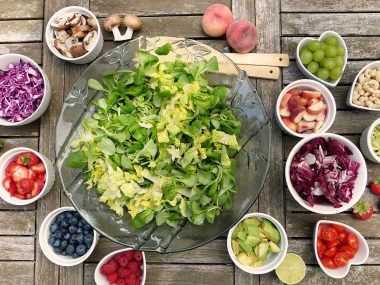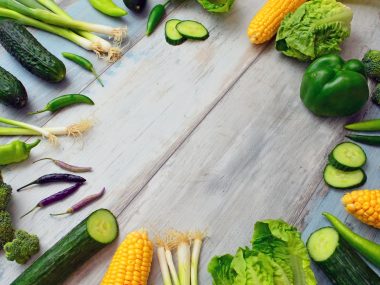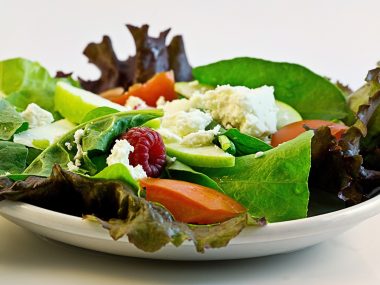Boarding on a weight loss journey often involves exploring various strategies and approaches to find what works best for your body and lifestyle. Intermittent fasting has gained popularity as a powerful tool for weight loss, offering a flexible and sustainable approach to achieving your goals.
Today, we’ll share actionable tips and strategies to help you incorporate intermittent fasting into your weight loss journey safely and effectively, while also considering the importance of diet, exercise, and lifestyle changes.
Understanding Intermittent Fasting
Intermittent fasting is not a diet in the traditional sense but rather an eating pattern that cycles between periods of fasting and eating. It typically involves restricting your eating window to a specific timeframe each day or incorporating periodic extended fasting periods.
By doing so, intermittent fasting can help regulate hormones, improve metabolic health, and promote weight loss by creating a calorie deficit.
1. Choose the Right Fasting Method
Intermittent fasting offers several approaches, each with its own unique structure and potential benefits. When selecting a fasting method, it’s essential to consider factors such as your lifestyle, schedule, personal preferences, and health goals. Here are the key intermittent fasting methods to explore:
- 16/8 Method (Time-Restricted Eating): This method involves fasting for 16 hours each day and restricting your eating window to 8 hours. For example, you might skip breakfast and consume all your meals between 12 pm and 8 pm, then fast until the following day at 12 pm.
This approach is popular for its simplicity and flexibility, as it can easily be integrated into most daily routines. It’s important to ensure that you’re still meeting your nutritional needs during your eating window.
- 5:2 Method: With the 5:2 method, you eat normally for five days of the week and restrict calorie intake to 500–600 calories on two non-consecutive days.
On fasting days, it’s essential to focus on nutrient-dense foods that provide essential vitamins and minerals while keeping calorie intake low.
Some people prefer to spread their fasting days throughout the week, while others opt for consecutive fasting days.
- Alternate-Day Fasting: Alternate-day fasting involves alternating between fasting days, where you consume minimal calories (typically around 500–600 calories), and non-fasting days, where you eat normally.
This approach can be effective for weight loss but may be more challenging to sustain long-term due to its restrictive nature. It’s crucial to prioritise hydration and nutrient-rich foods on fasting days to support overall health.
- Time-Restricted Eating: Similar to the 16/8 method, time-restricted eating focuses on restricting your eating window to a specific timeframe each day. However, the duration of the fasting and eating windows may vary based on personal preference and lifestyle.
Some people may opt for a narrower window, such as 18/6 or 20/4, while others may prefer a longer window, such as 14/10. Experiment with different fasting and eating windows to find what works best for you.
When choosing the right fasting method, consider factors such as your daily schedule, hunger levels, energy levels, and ability to adhere to the fasting protocol.
It’s essential to select an approach that feels sustainable and manageable for your lifestyle, allowing you to reap the benefits of intermittent fasting while supporting your overall health and well-being.
Additionally, it’s advisable to consult with a healthcare professional before starting any new fasting regimen, especially if you have underlying health conditions or concerns. They can provide personalised guidance and ensure that intermittent fasting is safe and appropriate for you.
2. Stay Hydrated During Fasting Periods
While fasting, it’s essential to stay hydrated by drinking plenty of water, herbal tea, or other non-caloric beverages. Hydration helps curb hunger, supports detoxification, and promotes overall well-being during fasting periods.
3. Focus on Nutrient-Dense Foods
When breaking your fast, prioritise nutrient-dense, whole foods to nourish your body and support your weight loss goals. Opt for lean proteins, healthy fats, fiber-rich vegetables, fruits, and whole grains to create balanced meals that provide essential nutrients and keep you feeling satisfied.
4. Pay Attention to Portion Control
Even during your eating window, practice portion control to avoid overeating and maintain a calorie deficit. Pay attention to hunger cues, eat mindfully, and stop when you feel comfortably satisfied. Portioning out meals and snacks in advance can help prevent excessive calorie consumption.
5. Choose Foods That Keep You Full
Incorporate filling, satiating foods into your meals to help control hunger and cravings throughout the day. Foods high in protein, fibre, and healthy fats, such as lean meats, legumes, nuts, seeds, and avocados, can help keep you feeling full and satisfied between meals.
6. Listen to Your Body
Pay attention to how your body responds to intermittent fasting and adjust your approach accordingly.
If you experience discomfort, fatigue, or other adverse effects, consider modifying your fasting schedule, duration, or method. Your well-being should always be the top priority.
Maintain a regular exercise routine to complement your intermittent fasting practice and enhance your weight loss efforts.
Incorporate a combination of cardiovascular exercise, strength training, and flexibility activities to maximise calorie expenditure, build lean muscle mass, and improve overall fitness.
7. Be Consistent with Exercise
8. Practice Mindful Eating
Embrace mindful eating practices to foster a healthier relationship with food and promote mindful awareness of hunger, fullness, and satisfaction. Slow down, savour each bite, and tune into your body’s cues to prevent overeating and promote enjoyment of meals.
9. Monitor Your Progress
Track your weight loss progress, energy levels, and overall well-being while incorporating intermittent fasting. Keep a journal, use a mobile app, or consult with a healthcare professional to assess your results and make any necessary adjustments to your fasting protocol.
10. Prioritise Consistency and Patience
Consistency is key when it comes to intermittent fasting and weight loss. Stick to your fasting schedule, make healthy food choices, and stay committed to your goals, even when progress seems slow. Remember that sustainable weight loss takes time and requires patience, dedication, and perseverance.
Conclusion
Incorporating intermittent fasting into your weight loss journey can be a powerful strategy for achieving your goals quickly and safely.
By choosing the right fasting method, prioritising nutrient-dense foods, staying hydrated, and practicing mindful eating, you can harness the benefits of intermittent fasting while supporting your overall health and well-being.
Combine intermittent fasting with regular exercise, lifestyle changes, and a positive mindset for optimal results, and remember to listen to your body, prioritise self-care, and celebrate your progress along the way.
With dedication and consistency, you can successfully navigate your weight loss journey and achieve lasting success.






